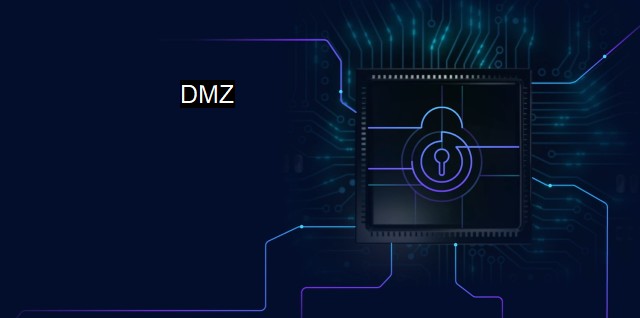What is DMZ?
The Importance of a DMZ in Cybersecurity: Shielding Internal Networks from External Threats
In the realm of cybersecurity and antivirus protection, one crucial term that often emerges is DMZ, an acronym for Demilitarized Zone. Much like the demilitarized buffer zones between hostile nations in a real-world context, a DMZ in a digital universe functions as a neutral zone, to offer an additional layer of security to a company's intranet.DMZ refers to a physical or logical subnetwork that isolates an organization's internal network from the untrusted, external network (like the internet), providing an extra layer of security. This segregated area contains the external-facing applications of an organization, set intentionally accessible to the public while remaining separate from the sensitive, internal resources. Configuring a system like this adds strength to a company's defense against potential cyber-attacks.
Operating on a principle of careful isolation, the DMZ serves as a kind of buffer zone. Typically, companies use two firewall setup - the first establishes a barrier between the public network and the DMZ zone while the second one separates DMZ from the internal network. This ensures that if the public-facing servers in the DMZ are compromised, the assailant wouldn’t get immediate access to the internal network containing critical and sensitive information and resources.
Here’s how a DMZ works to create an added barrier against cyber threats. Let's use an analogy to elucidate it better. Consider the DMZ as a house that's located in between the main building (internal network or LAN) and the external wild (internet). In the DMZ-house, you might have windows and doors (services and ports) open to the outside world, but the main building (internal network) would be securely locked away with no visible/open entry points. If one were to attempt to break in, they would firstly need to break into the DMZ-house (public servers) and then figure out a way to get into the main building, making the task significantly more challenging.
DMZs often host public websites, email servers, FTP servers, and VPN gateways. Both large businesses and smaller firms utilize this security measure for networks accessible to the public. This strategy partially insulates the rest of the company's network, significantly decreasing the potential damage of an attack. Even if an outward-facing network is compromised, access to inner networks and confidential information is limited.
DMZs are undoubtedly beneficial, but they are not completely foolproof. Ideally, they should be complemented with other protection strategies, such as virus scanning, packet filtering, and intrusion detection systems to ensure maximum security. Regular audits of DMZs are also essential to verify that all machines and applications are up-to-date with the latest security patches and upgrades. Organizations must ensure these practices are in place to facilitate the secured function of DMZ without compromising an entity's cybersecurity posture.
Also, it's worth noting that all entities are not the same and a one-size-fits-all approach doesn't work in cybersecurity. Setting up a DMZ may not be applicable or effectively shield all organizations. Each organization should hence evaluate its security needs meticulously and tailor its cybersecurity infrastructure accordingly. This could involve several other tools like antivirus software, network segmentation, and encryption, together with DMZ.
a DMZ carries a significant if not leading role in an effective cybersecurity strategy, acting as an intermediary zone between the open internet and the internal network. While it isn't invincible or a standalone solution to all cybersecurity perils, its strategic setup can help organizations significantly lessen the potential damage experienced from a cyber attack. DMZs should be used in tandem with other cybersecurity measures to create a comprehensive and robust defense against attackers.

DMZ FAQs
What is a DMZ in cybersecurity?
A DMZ (demilitarized zone) in cybersecurity is a network segment that acts as a buffer zone between a company's internal network and the internet. It is designed to provide an additional layer of protection to prevent unauthorized access to the main network.What is the purpose of a DMZ in antivirus software?
In antivirus software, a DMZ is used to isolate potentially infected devices from the main network, thus reducing the risk of malware spreading to other devices. This allows for a more targeted approach to containing and resolving security threats.How can a DMZ enhance network security?
By placing servers with public-facing applications in a DMZ, companies can limit the exposure of their internal network to potential threats. This way, even if a hacker gains access to the DMZ, they cannot access sensitive information stored in the main network. Additionally, DMZs can be configured to allow only certain types of traffic and have stricter security policies in place.What are the common components of a DMZ?
The common components of a DMZ are firewall, web server, and email server. The firewall controls the flow of traffic to and from the DMZ, and the web server and email server provide public-facing services, such as hosting a company's website or receiving external emails. These components work together to create a secure and isolated segment of the network.| | A | | | B | | | C | | | D | | | E | | | F | | | G | | | H | | | I | | | J | | | K | | | L | | | M | |
| | N | | | O | | | P | | | Q | | | R | | | S | | | T | | | U | | | V | | | W | | | X | | | Y | | | Z | |
| | 1 | | | 2 | | | 3 | | | 4 | | | 7 | | | 8 | | |||||||